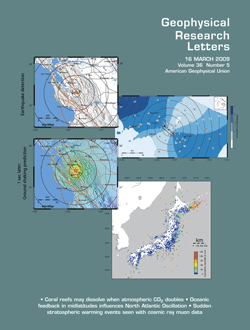| Home |
| Research |
| Downloads |
| Publications |
| Teaching |
| People |
| Press |
| Allen CV |
| Seismo Lab |
| Earth & Planetary |
| UC Berkeley |
Real-time earthquake detection and hazard assessment by ElarmS across California
Richard M Allen, Holly Brown, Margaret Hellweg,
Oleg Khainovski, Peter Lombard, Douglas Neuhauser
Seismological Laboratory, University of California, Berkeley
Geophys. Res. Lett., 36 L00B08, doi:10.1029/2008GL036766, 2009.
Part of a special section
New Methods and Applications of Earthquake Early Warning
Geophys. Res. Lett., 36 2009.
Download a reprint: AllenEtAlElarmS-RTgrl2009.pdf
ElarmS is a network-based methodology for rapid earthquake detection, location and hazard assessment in the form of magnitude estimation and peak ground motion prediction. The methodology is currently being tested as part of the real-time seismic system in California leveraging the resources of the California Integrated Seismic Network (CISN) and the Advanced National Seismic System. A total of 603 velocity and acceleration sensors at 383 sites across the state stream waveform data to ElarmS processing modules at three network processing centers where waveforms are reduced to a few parameters. These parameters are then collected and processed at UC Berkeley to provide a single statewide prediction of future ground shaking that is updated every second. The system successfully detected the Mw 5.4 Alum Rock earthquake in northern California for which it generated an accurate hazard prediction before peak shaking began in San Francisco. It also detected the Mw 5.4 Chino Hills earthquake in southern California. The median system latency is currently 11.8 sec; the median waveform data latency is 6.5 sec.
Download a reprint:
AllenEtAlElarmS-RTgrl2009.pdf

